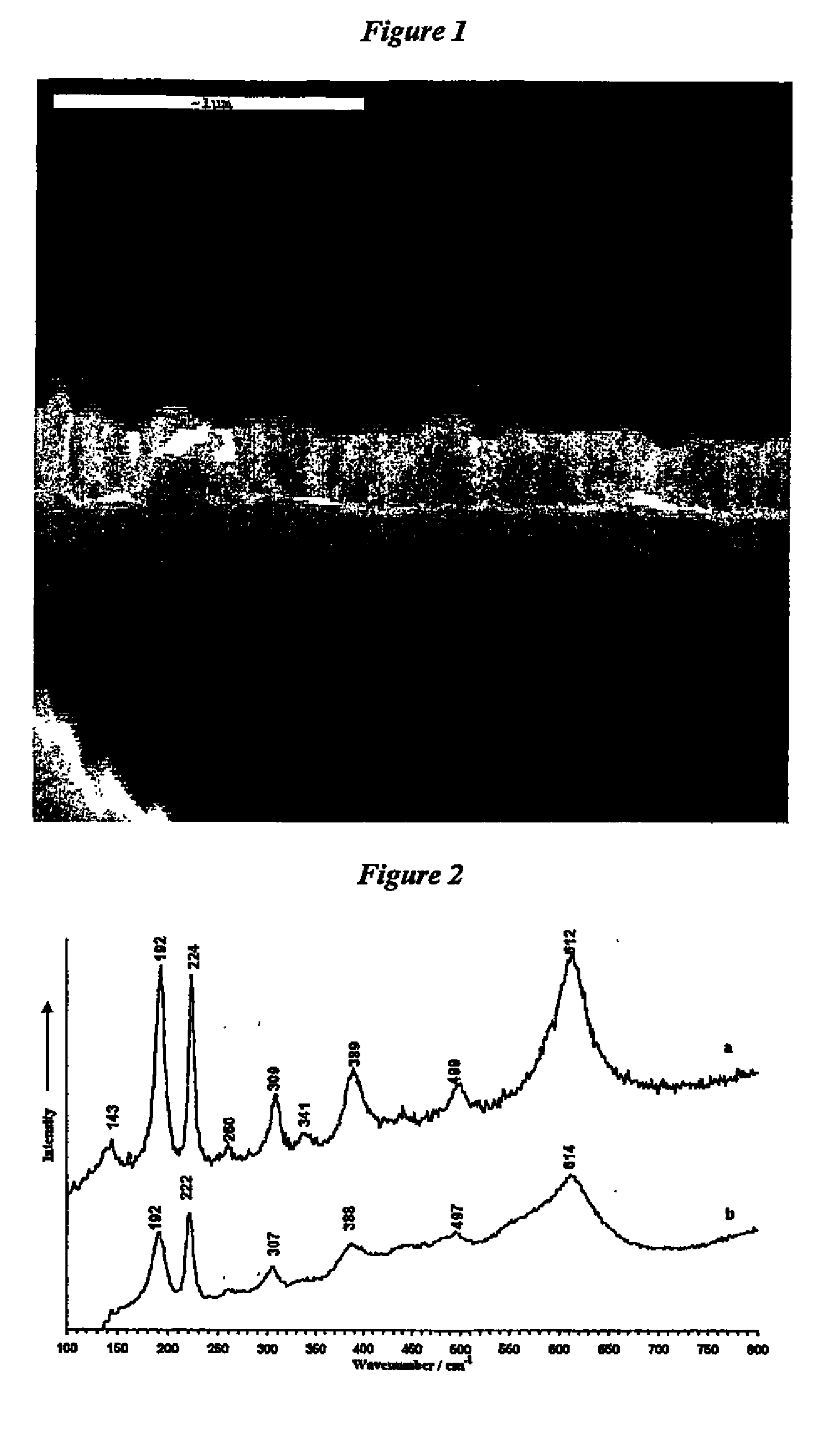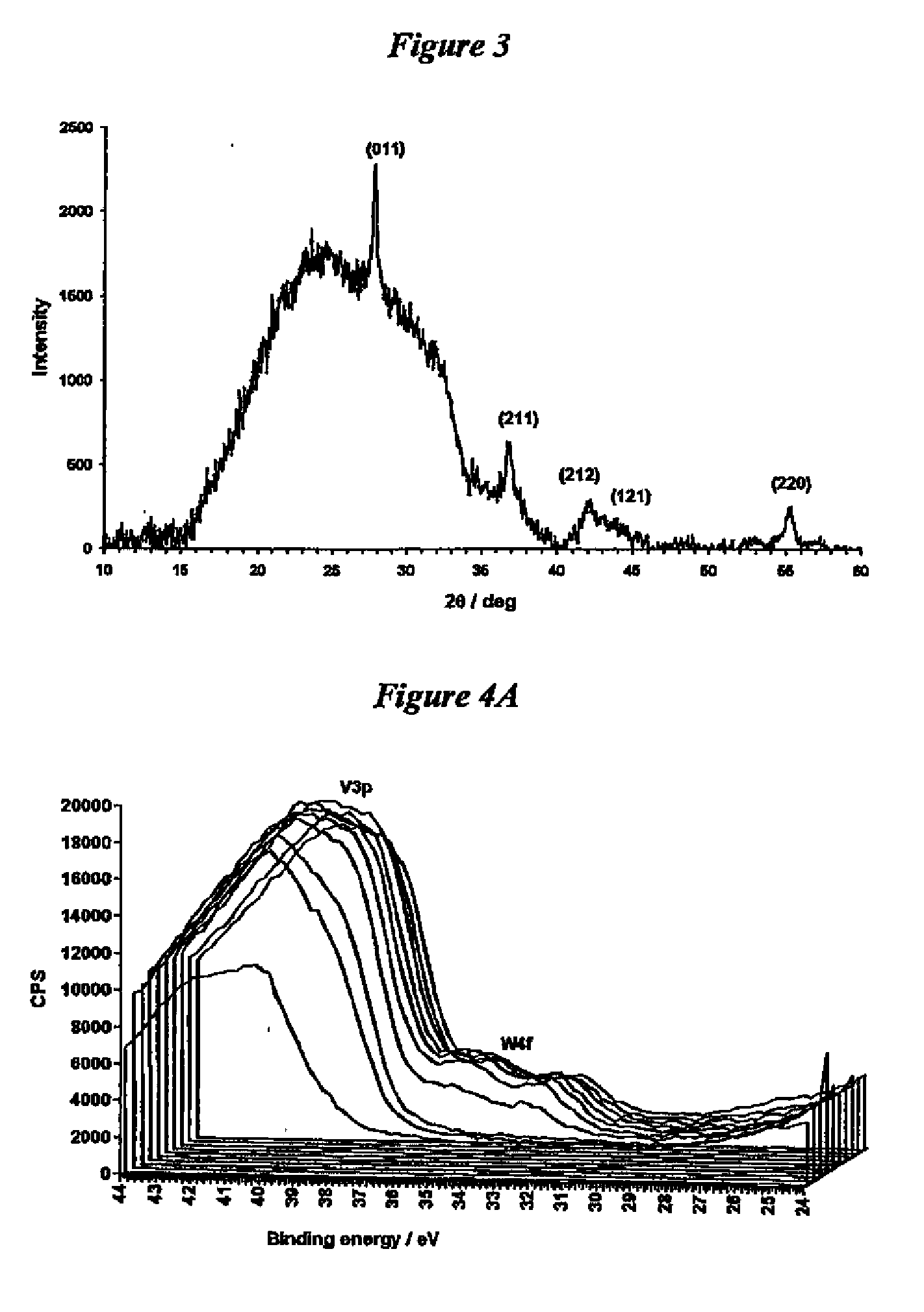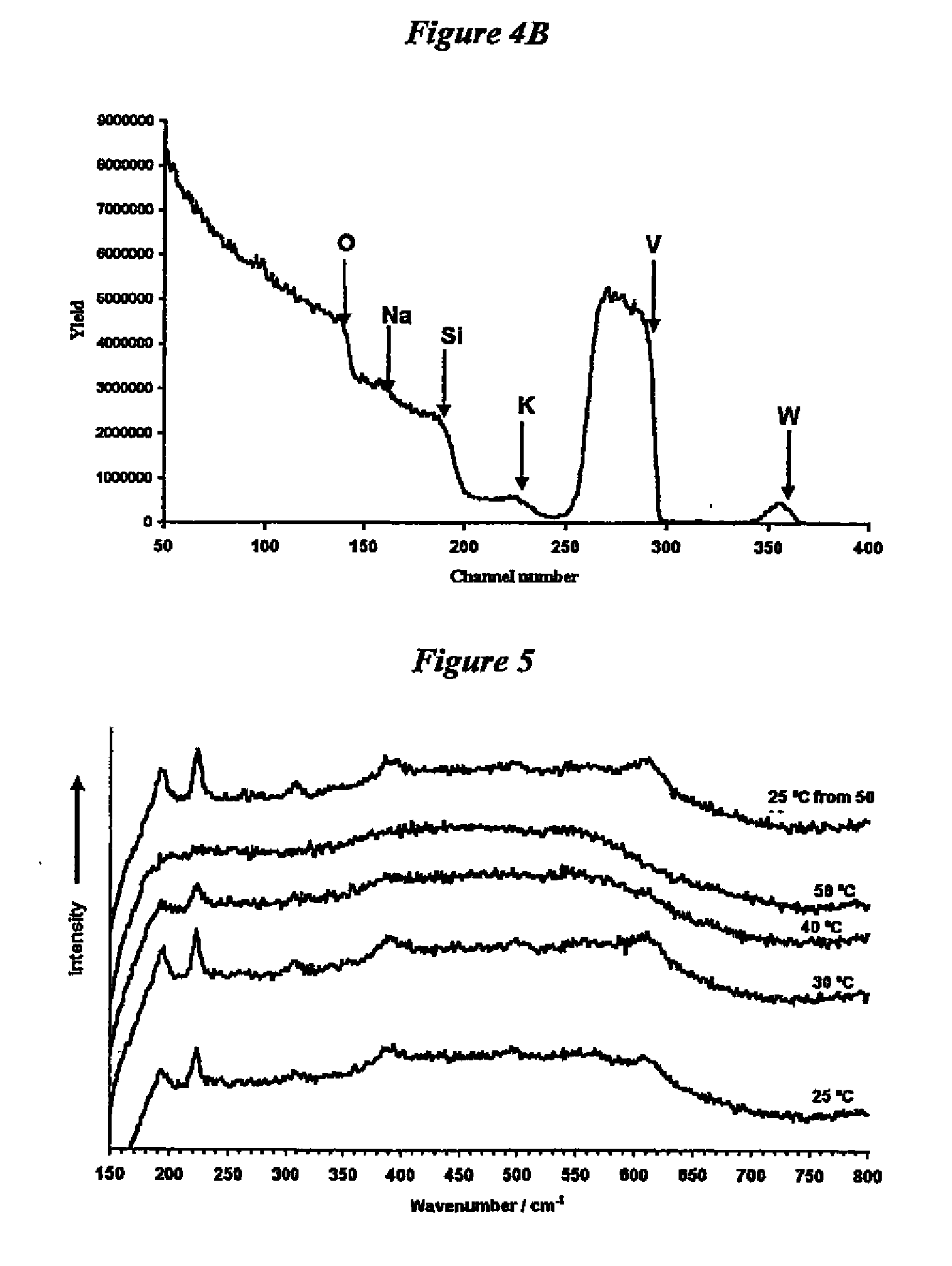Thermochromic coatings
- Summary
- Abstract
- Description
- Claims
- Application Information
AI Technical Summary
Benefits of technology
Problems solved by technology
Method used
Image
Examples
example 1
Vanadium Chloride, W(OC2Hs)6 and Water
Film Preparation
[0097] Vanadium(IV) chloride (99%, Aldrich, UK) and [W(OC2H5)6], (99.9% Alfa Aesar UK) were placed into separate bubblers. Distilled water was injected into the plain-line gas-flow using a fixed rate syringe driver (1.33 cm min−1) and a 2 cm3 syringe. A series of films were prepared by varying the carrier-gas flow-rate through the tungsten precursor bubbler and keeping all other conditions constant to those determined to produce undoped VO2 films. The VCl4:H2O ratio was between 1:5 and 1:10 for all CVD reactions, this was the condition previously determined to promote the growth of VO2 thin films [15]. The tungsten precursor bubbler temperature was set to 190° C. The flow rate through the bubbler containing the tungsten precursor was required to be greater than 0.5 L min−1 for significant vapour to be transported to the CVD reactor. A substrate temperature above 550° C. was required for formation of VO2 from VCl4 and H2O [15]. ...
example 2
Vanadium Oxytrichioride, WCl6 and Water
Film Preparation
[0117] Vanadium(V) oxytrichloride (99.5%, Strem, UK) and WCl6, (99.9% Strem, UK) were placed into separate bubblers. Distilled water was injected into the plain-line gas-flow using a fixed rate syringe driver (1.33 cm min−1) and a 2 cm3 syringe. A series of films were prepared by varying the carrier-gas flow-rate through the tungsten precursor bubbler between 0.2 L min−1 and 2.0 L min−1. All other conditions were kept constant to previous work [26]. The gas phase VOCl3:H2O concentration ratio was between 1:1 and 1:2 for all CVD reactions. The bubbler containing WCl6 was set to 240° C.
[0118] Analysis of the resulting films consisted of UV / vis, adhesion tests (scratch and abrasion resistance, Scotch tape test), vis / IR reflectance-transmittance, micro Raman spectroscopy, scanning electron microscopy and energy dispersive analysis of X-rays (SEM / EDX), glancing angle X-ray diffraction (GAXIRD) and X-ray photoelectron spectroscopy ...
PUM
| Property | Measurement | Unit |
|---|---|---|
| Temperature | aaaaa | aaaaa |
| Temperature | aaaaa | aaaaa |
| Temperature | aaaaa | aaaaa |
Abstract
Description
Claims
Application Information
 Login to View More
Login to View More - R&D
- Intellectual Property
- Life Sciences
- Materials
- Tech Scout
- Unparalleled Data Quality
- Higher Quality Content
- 60% Fewer Hallucinations
Browse by: Latest US Patents, China's latest patents, Technical Efficacy Thesaurus, Application Domain, Technology Topic, Popular Technical Reports.
© 2025 PatSnap. All rights reserved.Legal|Privacy policy|Modern Slavery Act Transparency Statement|Sitemap|About US| Contact US: help@patsnap.com



